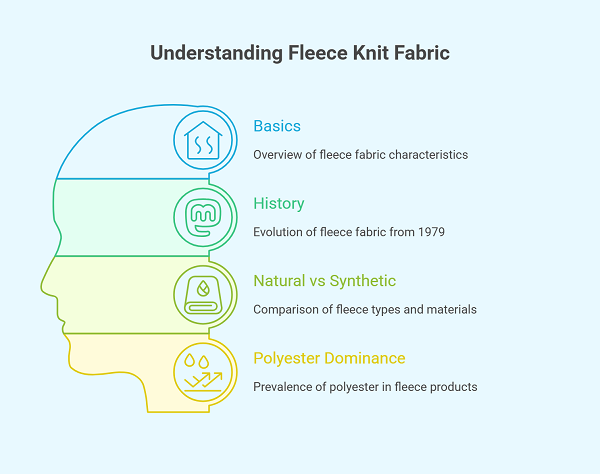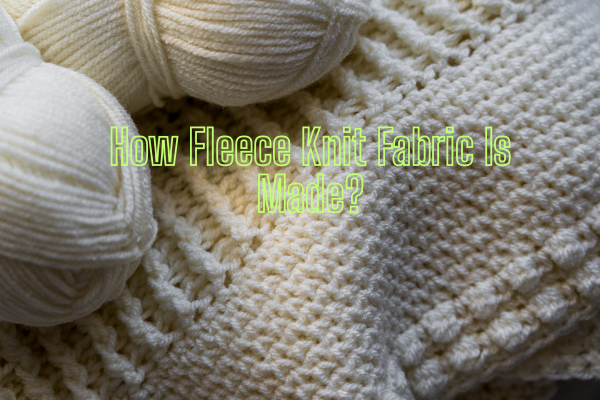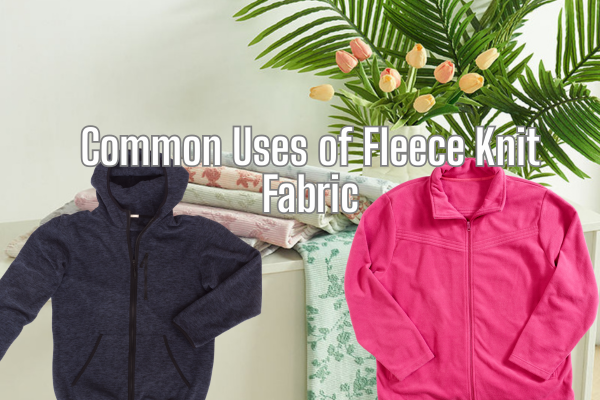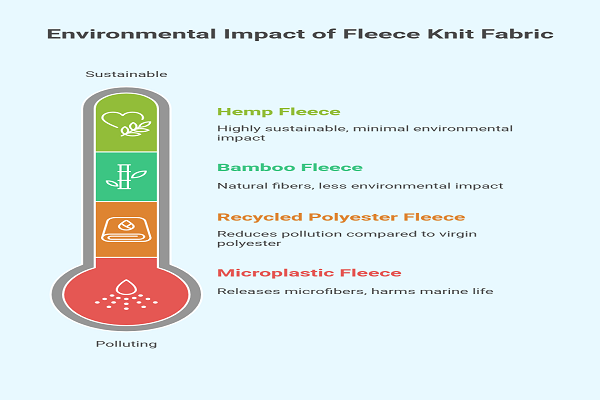What Is Fleece Knit Fabric?
Ever hugged a cloud? Neither have I. But fleece knit fabric comes close. It’s soft, stretchy, and surprisingly light for how warm it keeps you. Let’s dig into the world of fleece knit fabric — where coziness meets performance.
Table of Contents
The Basics You Should Know
Fleece knit fabric is a soft, insulating textile made by knitting synthetic or natural yarns, then brushing one or both sides for extra loft. Think hoodies, blankets, and activewear — fleece is everywhere.
The keyword here is knit. Unlike woven fabrics, fleece knit stretches, drapes well, and hugs your body like it was made for you (because it probably was).

Quick History of Fleece
Back in 1979, Malden Mills (now Polartec) changed the textile game by introducing synthetic fleece. It was lighter than wool, dried faster, and didn’t itch like your grandma’s sweater.
By 1981, Patagonia made fleece famous. Outdoor lovers haven’t looked back since.
Natural vs Synthetic Fleece
Natural fleece often refers to wool or cotton-based fleece. Synthetic fleece? Mostly polyester — sometimes blended with spandex or rayon for performance.
Roughly 85% of fleece products today are made with polyester. It’s cost-effective, durable, and highly customizable.
How Fleece Knit Fabric Is Made

Knitting vs Weaving: What’s the Deal?
Knitting involves looping yarn in a way that makes the fabric flexible and stretchable. In fleece’s case, it creates a base that’s soft and cozy.
Woven fleece? It exists, but it’s rare. Knit fleece is the go-to.
Step-by-Step Manufacturing Process
- Knitting – Usually circular knitting machines.
- Brushing – Metal brushes raise fibers to form that fuzzy surface.
- Shearing – Levels out the nap for uniform thickness.
- Dyeing – Adds color and life.
- Finishing – Softening agents, anti-pill treatments, or moisture-wicking coatings
Types of Fibers Used in Fleece Knit
- Polyester (most common)
- Cotton (used in blended fleece)
- Spandex (for stretch)
- Bamboo viscose (eco-friendly alternative)
Fun fact: Recycled PET bottles are used to make eco-fleece. Roughly 25 bottles = 1 hoodie.
Properties of Fleece Knit Fabric
Warmth Without the Weight
Fleece traps air. Air traps heat. This combo makes fleece thermally efficient. It insulates without weighing you down. A 250 GSM fleece can keep you warmer than a 400 GSM cotton hoodie.
Moisture Management & Breathability
Though synthetic, fleece is hydrophobic. It repels water and dries fast. Perfect for sweaty hikes or gym sessions.
Durability and Pilling Resistance
Anti-pill fleece holds up better over time. Regular fleece may start pilling after 10–15 washes, especially under friction.
Common Uses of Fleece Knit Fabric

Apparel Industry
- Hoodies
- Joggers
- Leggings
- Pajamas
Over 60% of winter loungewear globally is made from fleece knit fabric.
Sportswear and Outdoor Gear
Lightweight fleece jackets, base layers, and gloves. The outdoor industry swears by fleece. It’s a top pick for layering.
Home & Utility Applications
- Blankets
- Pet beds
- Sleep sacks
- Baby wraps
Advantages and Disadvantages
Pros You’ll Love
- Super soft (seriously, it’s huggable)
- Excellent insulation
- Lightweight
- Quick-drying
- Affordable
- Easy to sew and customize
A Few Downsides
- Can pill over time
- Not windproof (needs layering)
- Can trap odors
- Environmental concerns (microfibers)
Fleece Knit vs Other Fabrics
Fleece vs Wool
| Feature | Fleece | Wool |
| Weight | Lighter | Heavier |
| Drying Time | Faster | Slower |
| Price | Lower | Higher |
| Itchiness | None | Sometimes |
Fleece vs French Terry
French terry is looped inside, fleece is brushed. Fleece is warmer, French terry is more breathable.
Fleece vs Polar Fleece
Polar fleece is a type of fleece — just thicker and warmer. It usually weighs 300–400 GSM.
Care Instructions for Fleece Knit Fabric
Washing Tips
- Cold water
- Mild detergent
- Avoid fabric softeners (they reduce wicking)
Drying & Storage
- Tumble dry low or air-dry
- Fold, don’t hang (to avoid stretching)
Extending the Life of Your Fleece
Wash inside out. Skip bleach. Spot clean stains.
Environmental Impact of Fleece Knit Fabric

Microplastic Pollution
Each wash releases 700,000 microfibers. They slip into waterways and harm marine life. Bummer, right?
Sustainable Alternatives
- Recycled polyester fleece
- Bamboo fleece
- Hemp fleece
Brands like Patagonia and Vaude now use 100% recycled fleece.
Final Thoughts
Fleece knit fabric isn’t just a textile. It’s a lifestyle — soft, warm, low-maintenance, and ready for adventure. Whether you’re curled up on the couch or climbing a windy hill, fleece knit’s got your back. Literally.
So next time you slip on your favorite hoodie, remember — it’s fleece that’s doing the heavy lifting. Quietly. Comfortably. Powerfully.
FAQs
1. Is fleece knit fabric suitable for summer?
Lightweight fleece can work for cool summer nights, but it’s mostly a winter essential.
2. Does fleece knit shrink after washing?
Usually not. Polyester fleece holds shape well, though cotton blends may shrink a bit.
3. Can fleece knit be recycled?
Yes! Many fleeces are made from recycled PET and can be recycled again.
4. What is the GSM of good fleece knit fabric?
Ranges from 180 GSM (lightweight) to 400 GSM (heavyweight) depending on the use.
5. Is fleece knit breathable?
Yes, but not as breathable as cotton or mesh. Some fleece types come with ventilated panels for extra airflow.
